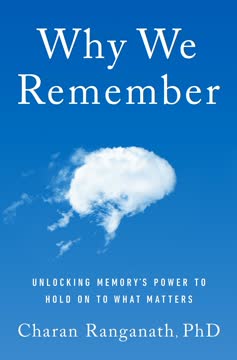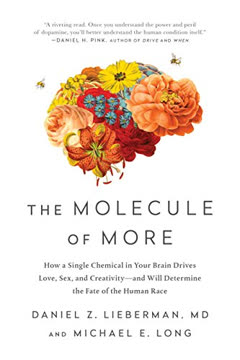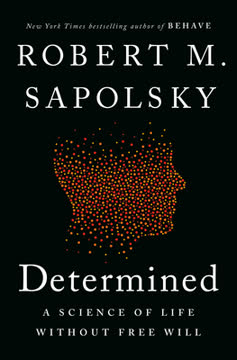Key Takeaways
1. Curiosity is a fundamental, multifaceted human drive for information.
Curiosity is a drive state for information.
A core human trait. Curiosity is not merely a fleeting interest but a fundamental drive state, a deep-seated desire to know and understand. It manifests in countless ways, from trying to decipher a whispered conversation to embarking on scientific inquiry. This inherent urge propels us to seek out novelty, resolve ambiguity, and make sense of the world around us.
More than survival. While curiosity undoubtedly aids survival by helping us learn about our environment and potential threats, its scope extends far beyond basic needs. Humans invest enormous effort in exploring and understanding the world, often exceeding what is necessary for mere existence. This suggests an intrinsic value placed on knowledge itself.
An unstoppable force. Throughout history, curiosity has proven to be a powerful, often irresistible force. It drives exploration, innovation, and intellectual pursuits across all domains of human activity. Even seemingly trivial matters can trigger this drive, highlighting its pervasive influence on our behavior and attention.
2. Curiosity can be categorized by its focus and motivation.
British Canadian psychologist Daniel Berlyne charted curiosity along two main dimensions or axes: one extending between perceptual and epistemic curiosity and the other traversing from specific to diversive curiosity.
Mapping the landscape. Curiosity isn't a single, monolithic phenomenon; it varies in its nature and triggers. Psychologists like Daniel Berlyne have proposed frameworks to categorize these variations, helping us understand the different ways curiosity manifests. These dimensions provide a useful lens for examining the diverse objects and motivations behind our desire to know.
Key dimensions:
- Perceptual vs. Epistemic: Perceptual curiosity is triggered by novel, surprising, or ambiguous stimuli (like seeing something unusual). Epistemic curiosity is the desire for knowledge and understanding (like wanting to know why something happens).
- Specific vs. Diversive: Specific curiosity seeks a particular piece of information (like solving a puzzle). Diversive curiosity is a restless desire for novel stimulation to avoid boredom (like endlessly browsing online).
Beyond the framework. While Berlyne's categories are influential, other types of curiosity exist, such as empathic curiosity (understanding others' feelings) or morbid curiosity (fascination with the macabre). These classifications help researchers study the distinct psychological and neural underpinnings of different forms of the drive.
3. The "Information Gap" theory explains curiosity as a drive to reduce uncertainty.
According to this view, curiosity and the ensuing exploratory behavior are not goals in themselves.
Closing the gap. One prominent theory, the "information-gap theory," posits that curiosity arises from perceiving a discrepancy between what we know and what we want to know. This gap creates an aversive, unpleasant state, and curiosity is the drive to fill it and alleviate the discomfort. It's like an intellectual itch that demands to be scratched.
Uncertainty as the trigger. The core of this theory is that uncertainty is the primary catalyst for curiosity. When faced with ambiguity, conflicting information, or missing details, we experience a negative feeling that motivates us to seek clarifying information. This is evident in our desire to finish a cliffhanger story or understand why someone acted a certain way.
Limitations of the theory. While the information-gap model effectively explains specific curiosity driven by a clear lack of information, it faces challenges as a comprehensive theory. It primarily frames curiosity as a negative-state reduction, potentially overlooking the positive, enjoyable aspects of seeking knowledge. Furthermore, recognizing a gap requires some prior knowledge, making it difficult to explain curiosity about entirely unknown domains.
4. Curiosity is also an intrinsic motivation, a pleasurable pursuit of knowledge for its own sake.
Recent research in psychology suggests that curiosity may provide its own reward.
The joy of knowing. Contrary to the idea that curiosity is solely about reducing discomfort, another perspective highlights its intrinsic value. This view suggests that seeking and acquiring knowledge can be inherently rewarding and pleasurable, motivating exploration for its own sake, independent of external benefits or the alleviation of an aversive state.
Interest and wonder. This perspective aligns with the feeling of interest, wonder, and excitement that often accompanies learning and discovery. It's the feeling that drives a child's gleeful exploration or a scientist's passionate pursuit of understanding, even when there's no immediate practical application. This "I-curiosity" (interest-based) contrasts with the "D-curiosity" (deprivation-based) of the information-gap model.
A family of mechanisms. Modern thinking suggests that curiosity likely encompasses a family of mechanisms, involving both the reduction of uncertainty (D-curiosity) and the pursuit of intrinsic rewards from learning (I-curiosity). The balance between these motivations may depend on the individual, the context, and the type of information being sought.
5. Neuroscience reveals curiosity activates brain regions linked to reward and learning.
The fMRI images showed that in response to self-reported high curiosity, the brain regions that were significantly activated included the left caudate and the lateral prefrontal cortex (PFC)—areas that are known to be energized on anticipation of rewarding stimuli.
Mapping the curious brain. Using techniques like fMRI, neuroscientists are beginning to identify the brain regions involved in curiosity. Studies show that when curiosity is piqued, areas associated with anticipating rewards become active, suggesting that the brain assigns value to information and the act of learning. This provides physiological support for the idea of curiosity as a rewarding state.
Curiosity enhances memory. Research also demonstrates a strong link between curiosity, memory, and learning. When people are curious about a topic, they are not only more likely to seek out information but also better at remembering it later, even incidental information encountered while curious. This is associated with increased activity and connectivity in the hippocampus, a key structure for memory formation.
Dopamine's role. The brain's reward system, heavily influenced by the neurotransmitter dopamine, appears to be intimately involved in curiosity. Studies indicate that curiosity taps into these dopaminergic pathways, suggesting that the desire to learn produces its own internal rewards, similar to those associated with primary rewards like food or water.
6. Human curiosity's unique depth is tied to the evolutionary expansion of our brain.
Ultimately, it is this curiosity and desire to explore in order to get to the bottom of causes and effects that has led to the birth of religions, to disciplines such as logic (and thereby mathematics and philosophy), and to the quest to understand how nature works—what we refer to today as science...
A brainy advantage. The remarkable depth and breadth of human curiosity, particularly our ability to ask "Why?" and pursue abstract knowledge, are linked to the significant evolutionary expansion of our brain, especially the cerebral cortex and striatum. Humans possess a far greater number of neurons in these areas compared to other primates, enabling more complex information processing and cognitive abilities.
The cooking hypothesis. The increase in human brain size and neuron count was likely facilitated by energy-saving adaptations, such as cooking. Cooking made food easier to digest, allowing our ancestors to gain more calories in less time, freeing up energy that could fuel a larger, more metabolically expensive brain. This created a positive feedback loop where increased brain power (and curiosity) led to better foraging and cooking techniques, further supporting brain growth.
Language and culture. The emergence of complex human language, likely enabled by our evolving brain, was a crucial turning point. Language allowed for the sharing of knowledge, the development of abstract thought, and the creation of symbolic culture, including myths, rituals, and eventually science and art. This ability to communicate and build upon collective knowledge dramatically amplified the impact of individual curiosity, leading to rapid cultural and intellectual evolution.
7. Highly curious individuals exhibit distinct traits and approaches to exploration.
“I’ve noticed an ability to ignore the obvious—maybe because it isn’t as interesting—and pay attention to seemingly insignificant aspects of subjects."
Beyond the norm. Individuals known for extraordinary curiosity, like Leonardo da Vinci, Richard Feynman, or contemporary figures like Freeman Dyson and Jack Horner, often display characteristics that set them apart. They are not just broadly interested but possess a deep drive to understand underlying mechanisms and connections, often focusing on details others overlook.
Shared tendencies:
- Intellectual Energy: They are often described as intellectually energetic and playful, retaining a child-like enthusiasm for discovery.
- Openness: They are open to exploring diverse domains, even those outside their formal training, and are willing to challenge conventional wisdom.
- Persistence (and flexibility): While some may have short attention spans for problems they can't immediately solve (like Dyson or Leonardo), they persist in exploring the world and return to topics that intrigue them.
- Experience over Authority: Like Leonardo and Horner, they often prioritize direct observation and experimentation over relying solely on existing texts or established authority.
Complexity and paradox. Many highly creative and curious individuals exhibit "complexity," embracing seemingly contradictory traits like being reclusive yet obsessive documenters, or combining deep emotional sensitivity with cold analytical rigor. This multifaceted nature fuels their unique perspectives and relentless inquiry.
8. Curiosity can be suppressed by fear and external constraints.
Oppressive rulers, harsh imposers of strict religious orthodoxy, controllers of information, and in general staunch guardians of the status quo sometimes felt that their subjects should be inferior to them in knowledge, and therefore that curiosity should not be encouraged.
Historical barriers. Throughout history, curiosity has often been viewed with suspicion and actively suppressed. Religious doctrines, tyrannical regimes, and societal norms have sometimes portrayed curiosity as dangerous, disobedient, or a source of unwanted change. Stories like Eve in Eden or Pandora opening the box served as cautionary tales against seeking forbidden knowledge.
Modern constraints. Even today, various factors can stifle curiosity. Poverty and the struggle for basic survival leave little room for exploration for its own sake. Censorship, deliberate misinformation, and the control of information by powerful entities continue to limit access to knowledge and discourage independent inquiry.
Systemic pressures. In fields like scientific research, pressures for funding and recognition can sometimes discourage risky, curiosity-driven exploration in favor of incremental, predictable progress. This highlights how external systems and incentives can impact the pursuit of knowledge, potentially limiting the scope of inquiry.
9. Cultivating curiosity involves embracing surprise and active exploration.
First, it is important to endeavor to preserve the ability to be surprised and to surprise others.
Nurturing the drive. While genetics plays a role in individual differences, curiosity is not fixed; it can be stimulated and cultivated. One key is to maintain a sense of wonder and surprise, actively seeking out novel experiences and phenomena that challenge expectations. This is like exercising the "perceptual curiosity" muscle.
Strategies for cultivation:
- Observe and Question: Pay attention to everyday phenomena and ask "Why?" or "How?" Encourage this in children by not immediately providing answers but prompting them to hypothesize and test.
- Document Intrigue: Keep a record of things that pique your interest. Reviewing these notes can reveal patterns and motivate deeper exploration ("epistemic curiosity").
- Embrace the Unknown: Don't shy away from uncertainty. Frame it as an opportunity for discovery rather than a source of discomfort.
- Explore Broadly: Allow yourself to wander intellectually. Browse diverse topics, follow unexpected links, and engage with people from different fields.
- Prioritize Active Learning: Volitional, self-directed exploration enhances learning and memory more effectively than passive reception of information.
Following the lead. Educators can foster curiosity by tapping into students' existing interests, using them as a starting point for deeper learning. This acknowledges that curiosity is often most potent when it aligns with personal inclination.
10. Curiosity is a powerful antidote to fear and a driver of progress.
“Curiosity will conquer fear even more than bravery will; indeed, it has led many people into dangers which mere physical courage would shudder away from, for hunger and love and curiosity are the great impelling forces of life.”
Overcoming apprehension. Curiosity has been described as a powerful remedy for fear. By focusing on understanding the unknown rather than fearing it, we can overcome apprehension and engage with challenges. This is reflected in the phrase "Replace Fear of the Unknown with Curiosity."
A driving force for humanity. Curiosity, alongside hunger and love, is one of the fundamental impelling forces of life. It has driven human evolution, leading to the development of complex brains, language, culture, science, and technology. It is the engine of discovery and innovation.
The path forward. Abandoning dogmatic certainty and embracing curiosity has ushered in a new era of progress and understanding. While we must be mindful of the potential negative manifestations of curiosity (like morbid curiosity or intrusive surveillance), the virtuous pursuit of knowledge remains essential for individual growth and the advancement of civilization. Letting curiosity lead us, even into the unknown, is key to a vibrant and meaningful existence.
Last updated:
Review Summary
Why? explores the nature of curiosity through scientific research and profiles of curious individuals like Leonardo da Vinci and Richard Feynman. Readers found the book informative but sometimes dry or technical. Many appreciated the insights into what drives curiosity and how it shapes human achievement. However, some felt it lacked cohesion or depth in places. The interviews with modern polymaths were highlights for several reviewers. Overall, most found the topic fascinating even if the execution was uneven, praising Livio's efforts to examine this fundamental human trait.
Similar Books









Download PDF
Download EPUB
.epub digital book format is ideal for reading ebooks on phones, tablets, and e-readers.







